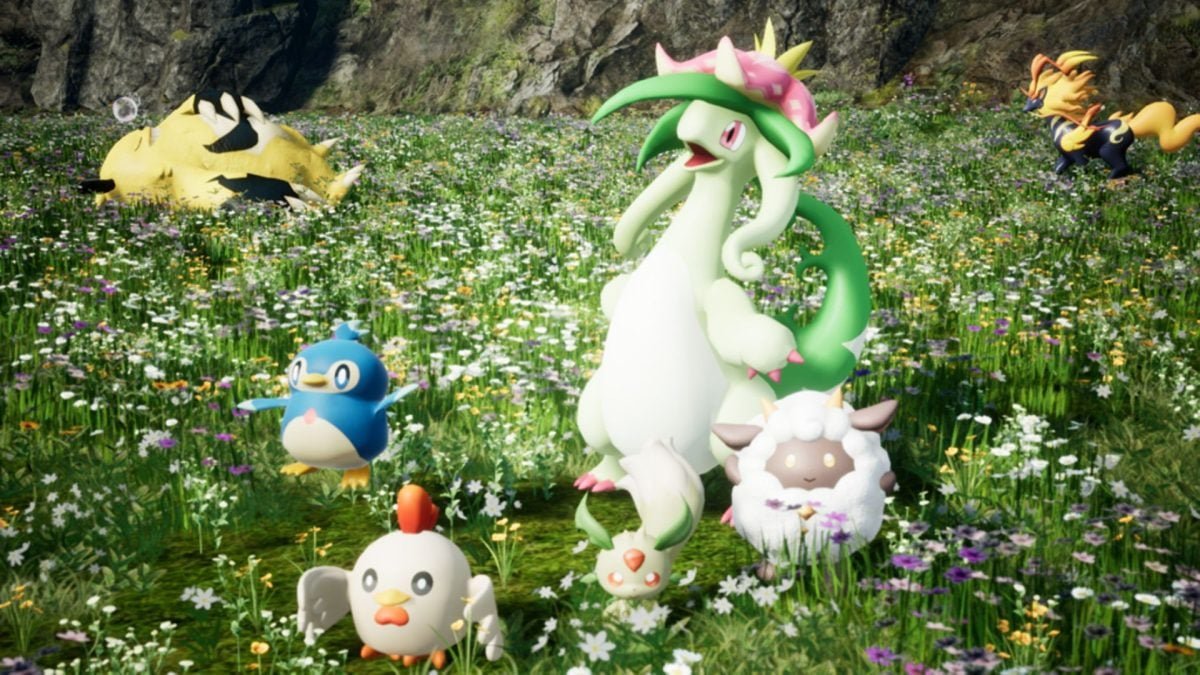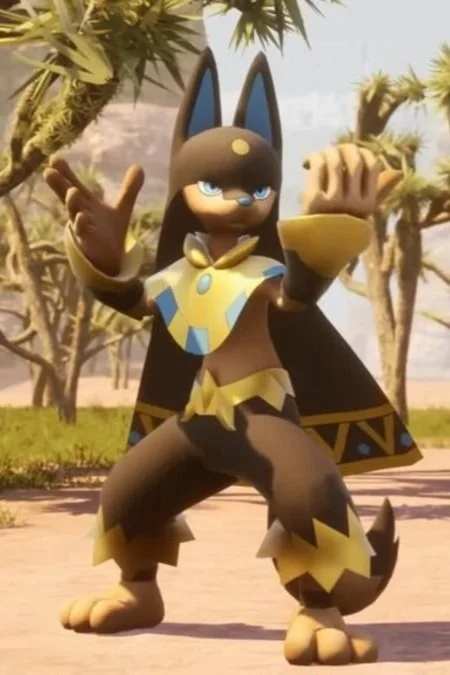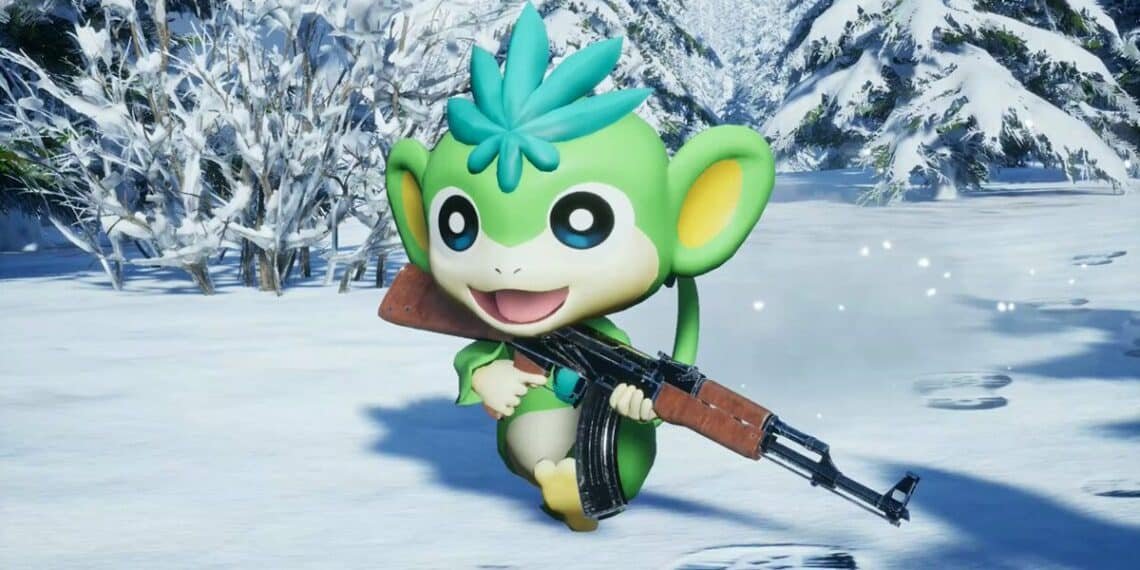Palworld and Pokémon: The Plagiarism Debate
By Gaming Editor Bonny Murphy
A new game has made quite the entrance to the gaming space in January of this year causing much debate online. Palworld, from gaming company Pocketpair, is a new creature collector survival game which was made with some seemingly heavy-handed inspiration. The game is set in firmly in the survival genre with core mechanics such as crafting, multiplayer and singleplayer support in a vast open world. The game’s unique quirk that sets it apart from other survival games is rooted in the ‘Pals’ you find along the journey.
Picture from Palworld by Pocketpair.
The world is populated with a variety of creatures called ‘Pals’ which you can fight or tame in order to assist you in your survival. They each have a separate visuals and different abilities and behaviours. These ‘Pals’ are the reason the loud minorities of the internet have risen up on both sides to unconstructively fight. Alone, the description of Palworld may not strikingly remind you of anything in particular, but upon playing the game you may see what some have called direct plagiarism of Pokémon.
Now, everyone has a different degree to which they would label something a direct copy as all art is inspired to some degree. However, Palworld’s ‘Pals’ design is close enough to warrant media discourse. The design of many ‘Pals’ are considered by some close enough to pre-existing pokémon that core fans of Pokémon found the creation of the game unfair and some even claimed that Palworld is an asset flip. The term asset flip refers to the taking of asset models of pre-existing figures or structures in a game and then re-colouring and editing them to appear new.
Regardless of its criticisms, Palworld has been an overwhelming success for Pocketpair, in part due to this boost in coverage thanks to the controversy, but also due to how loved the game has become. Boasting very positive reviews and holding the top seller spot on Steam consistently from January 16 through to February 6, the game has truly reached success regardless of the debate. However, there would be no article if this was as simple as a success story.
Explaining the visual differences and similarities of the ‘Pals’ versus pokémon is near impossible without referring to side-by-side images of both. I would encourage those curious to do this and judge for yourself. Regardless, I will do my best to describe some of these similarities/differences here. Some of the ‘Pals’ are of a similar shape or type of creature to their pokémon counterpart but vastly different in style and colour. As an example, both could be the vague shape of a fox or penguin but completely different in colour pallet, visual style and type of abilities or power. What I mean by abilities or power is related to what makes ‘Pals’ or pokémon unique from other ‘Pals’ and pokémon. This is related to each respective game have a typing system to identify differences. These types often include elemental categories such as fire, ice, water etc. This system is a similarity between Palworld and Pokémon as both have their respective creatures in elemental boxes.
For those unfamiliar with creature collector games this may seem a too similar similarity but it really is of no concern. Almost every game with a large amount a fantastical flora or fauna will categorise them in some way. The thought of a fire wolf or a water dragon is too broad to be cause for plagiarism.
Anubis from Palworld.
Depending on the ‘Pal’ being compared, most share one, maybe two aspects of the pokémon counterpart at most. For reference, a ‘Pal’ may be a rodent with electric design aspects, but that does not make it the famous pokémon Pikachu. However, I will admit some ‘Pals’ do look enough alike to pokémon that to someone unfamiliar with either game may confuse them. But this rather calls into question whether Nintendo, creators of Pokémon, can hold dominion over the concept of an electric rodent entirely. Speaking on Nintendo, they themselves have released a statement regarding the whole situation as of January 25. They note on the ‘many inquiries”’they have received ‘regarding another company’s game released in January 2024.’ This opening indicates Nintendo have only acted on the basis of receiving concern from their own community and were otherwise unaware of Palworld’s existence. Nintendo continue that, ‘We have not granted any permission for the use of Pokémon intellectual property or assets in that game.’ and furthermore, ‘We intend to investigate and take appropriate measures to address any acts that infringe on intellectual property rights related to the Pokémon.’ Curiously Nintendo never names Palworld directly as the cause of these complaints, though their mention of the release year indicates no other game. Though a strong statement, it is unclear as of now whether Nintendo would have any legal case against Pocketpair regarding this issue.
Top: Sparkit from Palworlds. Bottom: Pikachu from Pokémon.
I was immensely, and perhaps naively, surprised at the level of outrage and aggression online surrounding this debate. So lastly, I want to attempt, though often in vain, to provide a more balanced take on the situation and online discourse surrounding gaming as a whole. My own experiences with Pokémon games have been majority positive although I have always had one complaint. They are essentially the same game to me. For those unaware, Pokémon’s premise is that you play as a young pokémon trainer who collects various pokémon to fight other trainers and become champion. This simple method has been repeated by Nintendo with the only innovation coming from a new roster of pokémon creatures to collect, many of which are lacking in creativity as of lately. This can be understood as Nintendo may simply be running out of ideas due to how long they have had to churn out new designs. However, this flaw made me eventually stop playing each new release.
I see Palworld as a fresh innovation on that space. They created a creature collector game with a new survival spin. Each ‘Pal’ can help the player survive and thrive within the open world game. This change was much needed by Nintendo, but they were simply beaten to the idea by Pocketpair.
However, it is important to note that the similarity between Pokémon and ‘Pals’ was likely no accident either. Pocketpair knew there were many Pokémon fans, like myself, who wished for another type of game with a similar roster of creatures. While the ‘Pals’ may not be direct plagiarism, they are heavily inspired by Pokémon so as to draw in that massive worldwide audience. Understanding both sides of this debate are important in gauging how bad a situation really is. While Pokémon fans wait for further news regarding Nintendo’s investigation, many are still flocking to buy Palworld and experience, what some have called, ‘the Pokémon with guns game’.
Tanzee from Palworld.
The most important take-away I had from this situation was how easily a rather minor point of controversy can be blown out of proportion. Those Pokémon fans who contacted Nintendo and aggressively defended Pokémon online only created more of a media storm in directing traffic to this new game. A calmer approach in discussing and handling gaming differences would have been helpful here as ultimately, I am still unsure there is much of a fuss to be made about this still. You will have to make your own mind up regarding Palworld and plagiarism as it is yet to be decided. In the end, I will still enjoy both games and hope to see more innovation of genre like this in the future.





